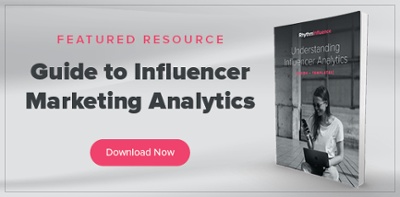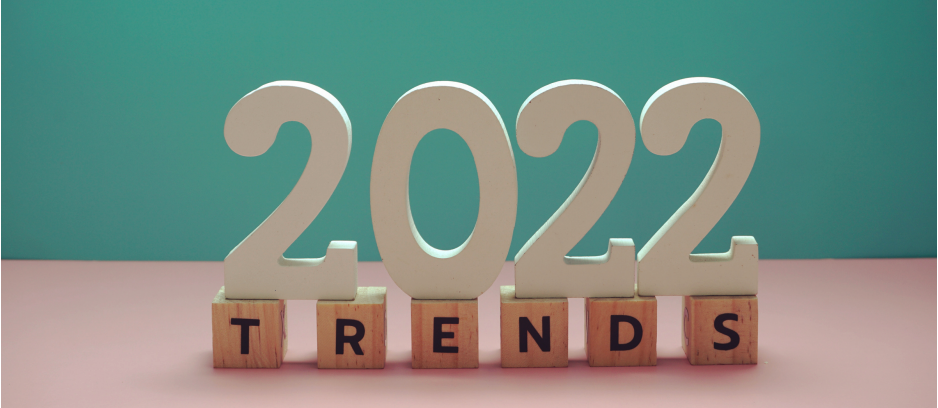Influencer marketing is one of the fastest growing marketing channels out there, and with brands on track to spend up to $15 billion on influencer marketing by 2022, analytics are more important than ever.
This global investment in branded social content is not without justification. 89% of marketers say that ROI from influencer marketing is comparable to or better than other marketing channels. But how did we get to this point? Read on for a deep dive in measuring campaign success.
How do you measure influencer marketing ROI?
In addition to keeping an eye on your KPIs, the most common measurement of influencer marketing is your ROI. The most straightforward way to measure ROI is with this tried and true formula:

For example, if you were to spend $150,000 on a single campaign and that were to go on to generate $1,200,000 your return on investment (ROI) from this campaign would be 800%.
However, while knowing the ROI from your influencer marketing campaigns is an important insight into how successful they are, the ROI alone does not tell the full story when it comes to overall campaign success— that requires a few more metrics. These metrics may include engagements, impressions, brand/sales lift, or more nuanced outcomes like sentiment or other qualitative trends.
RhythmInfluence’s campaign with Betty Crocker resulted in a 99% positive sentiment among viewers of influencer content.
Influencer Marketing Metrics
For a holistic view of your campaign you need to have your finger on the pulse of a variety of metrics. And with so many different potential platforms and tiers of influencers you could be working with, it can be overwhelming to rake through your collected data looking for the insights that really matter.
But before you roll up your sleeves to begin analyzing your collected metrics, take a moment to review your goals. The metrics you collect will be useless unless you are able to visualize how the data directly correlates with the goals you have set out to achieve.
For example, if your goal is to grow brand awareness then your most essential metrics to analyze would be qualified reach, brand lift, and social mentions. If you don’t stop to set specific goals, you run the risk of ending up with a lot of data and no direction.
Benchmarks for engagement rates and awareness/reach vary by influencer tier, campaign length, and other factors. Some baseline benchmarks for engagement rates on various social platforms include:
- Micro influencers: 4%
- Mid-Tier influencers: 1.5%
- Premium influencers: 1.25%
- Mega (Celeb) influencers: 1%
YouTube
- Micro influencers: 2%
- Mid-Tier influencers: 1%
- Premium influencers: 0.4%
- Mega (Celeb) influencers: 0.4%
TikTok
- Micro influencers: 18%
- Mid-Tier influencers: 10%
- Premium Influencers: 7%
- Mega (Celeb) influencers: 5%
If brand awareness isn’t your goal, others may be:
- Increased traffic to your site
- Reaching a previously untapped audience demographic
- Increasing sales on specific products
- Increase social engagement across all platforms
- Improve conversions
- Gain customer insight
What are the most important influencer marketing metrics?
Now that you’ve chosen the goal, it’s time to dive deeper into the specific marketing metrics that will get you there.
There are two primary types of influencer marketing metrics to keep track of:
- Influencer-driven metrics
- Campaign-driven metrics
Typically, the success of one means the success of the other. But to really see the full picture of your campaign you will need to keep your eye on the metrics generated by both sides of this branded partnership coin.
Influencer Performance Metrics to Track
Before you begin a campaign, you will run through these metrics and more to see if the person of choice is a good fit, but the metric tracking doesn’t stop just because your partnership has begun. Track these metrics throughout your brand partnership to gain an understanding of social media performance.
- Engagement— tracking the overall engagement that your influencer generates on their branded posts is a great starting point for seeing how successful your partnership is from the jump, engagement in the form of likes, link clicks, shares, and comments are baseline KPIs to keep an eye on.
- Brand Safety & Fraud Prevention — analyzing followers and engagements for fraud (i.e. unusual spikes, context of engagements, location of followers, etc.) as well as looking at the overall quality of post content to ensure there are no brand safety issues.
- Shares— your campaign can only generate so much if your branded posts live and die on your influencer’s social media page. By tracking the shares of your branded posts you will be able to see just how far of a reach your influencer really has.
- Mentions— an often overlooked metric, mentions are a great way to track how social media word of mouth is boosting your brand awareness. This metric will show you how frequently, how often, when, and to whom users are telling one another about your influencer and your product on social media.
- Sentiment - engagements are an important metric, but simply looking at the number of engagements doesn’t tell the full story. It’s essential to not only look at overall engagements, but the quality of those engagements by analyzing positive vs. negative sentiment.
- Impressions— aka the number of times a specific post was viewed on a social media platform, when you compare the number of impressions on your branded posts to one another you can learn what separates the good branded posts from the greats.
Campaign Performance Metrics to Track
Now for the other partner in this partnership, track these metrics to see how the engagement on your influencer’s sponsored posts translate to engagement with your company:
- ROI— as mentioned above, tracking the ROI of your influencer marketing campaign will show you the success of your campaign in clear cut dollar signs.
- Traffic— if your goal is to drive traffic to your company site then you will want to set up UTM codes or Adobe Link Tracking on your links to better track where exactly your site traffic is being generated from.
- Clicks— another way to better visual where exactly your traffic is coming from is by tracking link clicks, when you see an increase in clicks coming from your influencer’s page that is proof that your campaign is working.
- Purchases— removed from your campaign, your company is already tracking sales. Expand on that data by taking your campaign as an opportunity to begin also tracking more specific sale metrics like average order value and cost-per-acquisition.
- Signups— sometimes a user will be enticed by branded posts but not yet committed to making a purchase, so keep them in the loop by providing places for them to sign up with your company such as for your newsletter or by creating an account on your site.
- Brand & Sales Lift - direct sales are important to track, but often, there is a long cycle between when a user discovers your brand and purchasing from your company. Measuring brand lift, sales, and consideration will allow you to gauge how the influencer is driving intent to purchase.
- In-Store Visits & Offline Sales - if you're a company that generates a large portion of their revenue from brick & mortar locations, it’s imperative to measure in-store visits & offline sales from your campaign.
How do organizations measure the success of influencer marketing?
Once your campaign has ended there are a few more influencer marketing metrics you should calculate to gain an even more in-depth view of how well your campaign performed. Remember, your analytics will only be as insightful as how they contribute to the goals you set before your campaign.
Review your goals before calculating the success of your influencer marketing campaign with these metrics:
- CPE— after your campaign, calculate your cost per engagement to see how much all of those likes, comments, shares, saves, and mentions cost your team.
- CPM— another metric to track after your campaign is your cost per impressions (technically the cost per thousand impressions), with the formula: Cost X 1000 / Impressions you can see the cost of reaching an expanded audience.
- CPC— for campaigns that are focused more on ecommerce sales and/or site traffic.
It’s worth noting that focusing your efforts on one of these metrics will impact the other. For example, campaigns with an efficient CPE will likely have a strong engagement rate. However, since a higher engagement rate results in a lower volume of impressions, this could result in a higher CPM. It’s important to determine first which metric is most important in defining success for your campaign.
Top Influencer Marketing KPIs
Just like there is no one right way to execute an influencer marketing campaign there is no one influencer marketing KPI that stands above the rest in terms of importance. The most important KPIs to your campaign are dependent on your campaign goals.
For any campaign, set goals and track metrics, then they can serve as benchmarks for future campaigns. The more data you collect, the better you’ll understand how each campaign performs based on audience, category/niche, or budget.
With those goals in mind, let’s run through the Key Performance Indicators (KPIs) to watch out for during your next influencer marketing campaign.
Conversion Rates
Conversion rates work hand in hand with lead generation. The key here is to first take stock of your conversion rates of specific influencers and platforms, then embrace what is working so you can replicate it. By adjusting based on your conversion rates, you can continually optimize and produce more high performing content, and in turn generate more website traffic. Speaking of...
Website Traffic
One clear-cut way to see the impact is by checking if and in what ways it has generated you more website traffic. When your goal is to increase brand awareness and sales, the first step is to get users to your website. The following metrics will give you insight into if you are generating increased website traffic:
- New visitors— to see if your brand awareness is growing, track the number of new users who are visiting your website for the first time
- Total sessions— the number of total sessions recorded on your website is akin to doing a headcount of customers browsing in a brick and mortar store, the more the better
- Pageviews— To zoom in on what specifically those customers are checking out on your site, track the total pageviews of each page of your website
- Time spent on site— To figure out your bounce rates you first need to track this metric: the average time spent by individual users on your website
- Referrals— if your marketing campaign is a partnership with multiple influencers, tracking referrals is one way to see exactly which of your influencers are generating website traffic and how much
Sales
You didn’t think we forgot about sales, did you? Simultaneously the most simple to track and the most consequential figure, the amount of sales generated by your influencer marketing campaign is a clear indicator of how successful your campaign was.
To track sales generated by specific influencers have them post trackable links and unique promo codes. This way you will be privy to the exact source of all of your sales, so you can adjust your marketing efforts accordingly.
It’s also important to set up attribution modeling on your site to fully gauge how influencer is driving sales. Often, the influencer post won’t be the last click to conversion as a person might first discover your product, then research reviews, then comparison shop, then finally convert. If your analytics is set up to only assign sales credit to the last visit to your site, you won’t be tracking influencer sales properly.
And remember, if your sales aren’t where you would like them to be during the course of your campaign, influencer marketing isn’t set in stone. Instead, stay flexible so that you can adapt your branded posts in order to better reach your audience.
Now that you’ve taken the crash course it’s time to put what you’ve learned to the test. How are you going to put what you’ve just learned into effect in your next influencer marketing campaign? Subscribe to the RhythmInfluence blog to learn more about analytics, engagement, and ROI on your next brand partnership.






SUBMIT YOUR COMMENT